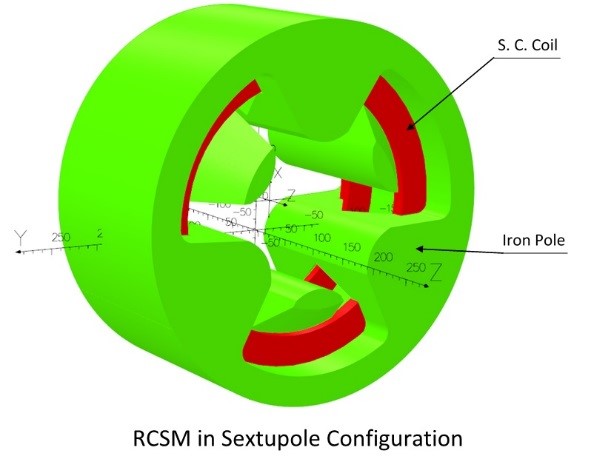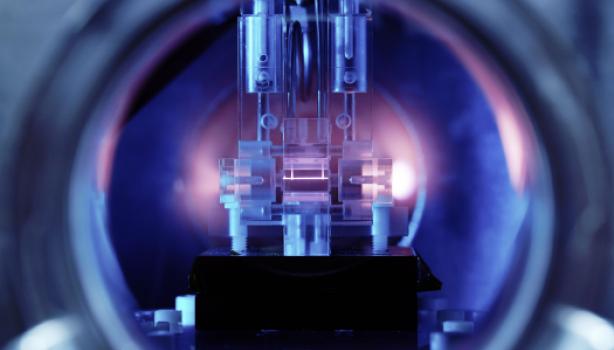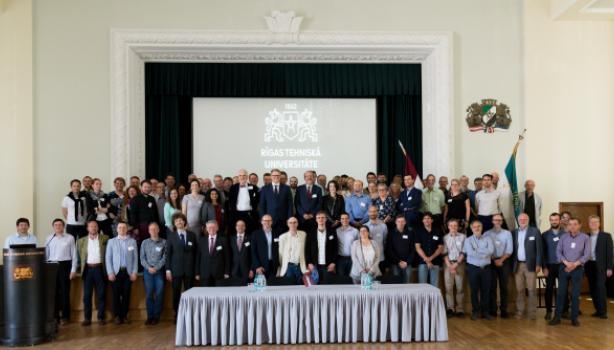On 7th March the INFN-LASA laboratory completed the construction and successfully tested a superconducting coil in MgB2 (Magnesium di-Boride based conductor) to be used in a high order corrector magnet. Development of MgB2 coils for a Round Coil Superferric Magnet corrector was launched in the framework of the HL-LHC project IR magnets. This design, proposed in the 70s by Russian scientists, allows to create any multipole with the same round coil through a three dimensional shaping of the iron; the low curvature radius of the coil allows using MgB2 superconductor.
Application of this design to the HL-LHC high order correctors started in 2014 by our late lamented Giovanni Volpini with CERN support. Computations showed that this option had a lower efficiency in terms of longitudinal space, and therefore the classical superferric option with Nb-Ti and standard two dimensional iron shaping was retained; INFN-LASA built three correctors based on this design in the past two years, and two more types are being built in collaboration with industry. Nonetheless, the MgB2 RCSM prototype magnet has remained in the development line to explore the manufacturing aspects of this design, and to have a MgB2 corrector available for high energy accelerators, a prima for this technology.
A single coil, wound with conductor produced by Columbus Superconductors (Genova), was tested in LASA without the iron yoke; this coil is the active part of the RCSM magnet, which will be assembled and tested in September 2019. The coil, cooled at 4.2 K with liquid helium, reached without any training quench the specification current (“ultimate current”, 160 A), passing also the stability test of one hour at the ultimate current. The coil was then energized to larger currents to investigate the limiting current, which resulted in 243 A; this is 73% of the intersection of the load line with the critical current for virgin, not-degraded, conductor. It should be noted that this current limit was reached without intermediate quench (no training).

Image Credit: INFN/LASA
“The test result is beyond our expectations,” says Massimo Sorbi from INFN-LASA. “MgB2 virgin conductors are very prone to degradation when they are wound and manipulated with even better procedures used for the other common superconductor magnets based on NbTi. Our cryogenic test was also complemented with the measurement of the thermal contraction of coil (literature is lacking of this data regarding MgB2 coils), which will enable a better design of the mechanical structure for the final magnet.” “This is a relevant technological spin-off of the HL LHC project”, says Ezio Todesco, in charge of HL-LHC IR magnets, “enabled by the synergy between INFN-LASA and CERN”.

Image Credit: INFN/LASA


